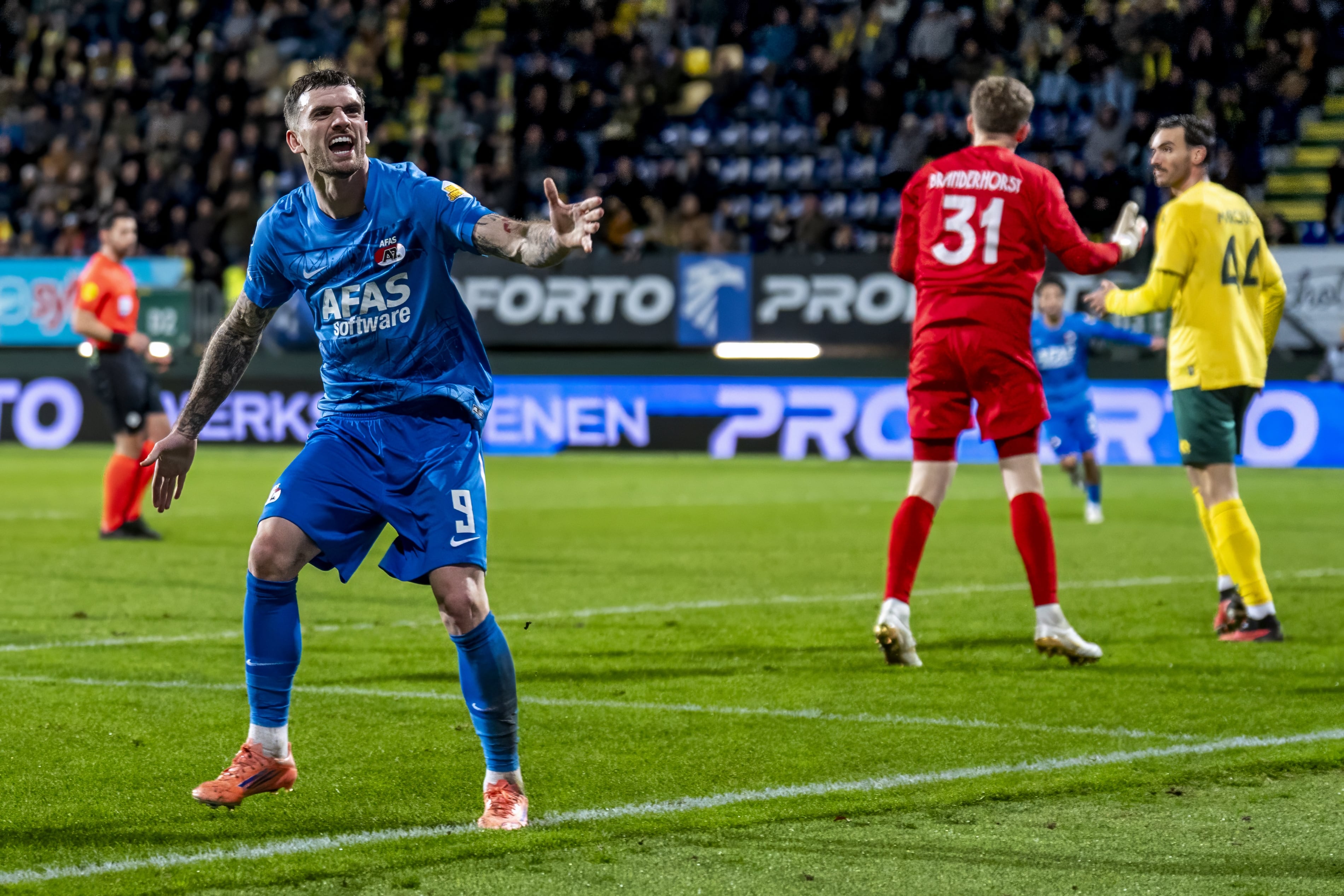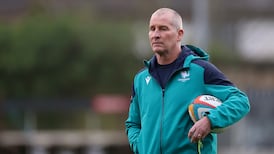Standing back to see is the hardest thing sometimes. Geographical scientists talk about the idea of landscape amnesia, the inability to picture what your homeplace looked like when you were a kid, especially if you’ve lived there all your life. The changes to your environment are so gradual, so imperceptible over time, that you have no real concept of where you started.
To follow Irish sportswomen around the globe these days is to experience a little of that. It’s such a normal thing now to expect success, to hear news of this world title or that gold medal or another other tournament win and not be one bit surprised by any of it. So much so that it can be hard to find the right way to put it all in context.
Yes, this is a great era for Irish sportswomen. But any fool can make a blithe declaration – and God knows the commentary around women’s sport has featured no shortage of either down the years. We’ve long since owed these athletes a little more than that and a good place to start would be to put a bit of shape on what great actually means.
In that spirit, here’s a small exercise. It’s not scientific and it’s not forensic. You wouldn’t take it to court and offer it up as proof of anything. But it is, perhaps, a way of sketching the landscape at two different points in time and seeing what they look like placed side-by-side.
READ MORE
When The Irish Times started the Sportswoman of the Year awards back in 2004, it’s fair to say there were occasions when a monthly winner wasn’t always immediately obvious. This isn’t to denigrate the winners in any way – it’s the opposite, in fact. These women were forging paths that look obvious to the rest of us now but that, in plenty of cases, barely existed back then.
The first ever monthly award, 19 years ago in a few weeks, went to Azmera Gebrezgi, an Eritrean-Irish schoolgirl who had led the Irish junior team to victory in a Celtic Cup cross-country event in Scotland. The March award in 2004 went to Linda Caulfield, midfielder on the Ireland hockey team that drew 1-1 with Germany in an Olympic qualifying tournament – Ireland finished eighth out of the 10 teams in the tournament and didn’t threaten a spot in Athens.
Sonia O’Sullivan won the May award on the basis of a 5,000m pipe-opener in a small meeting at Stanford University and a 10k road race in Manchester. “In a way, I designed that month as a break from training,” was how the great woman described her May schedule, sounding pleasantly confused at being garlanded by The Irish Times for it.
Sonia’s gentle training month aside though, none of the awards in that first year were small achievements by the women involved. Again, the point here isn’t to do down their triumphs in any way. Instead, it’s to show how far everything has moved on in the almost two decades that have passed since then.
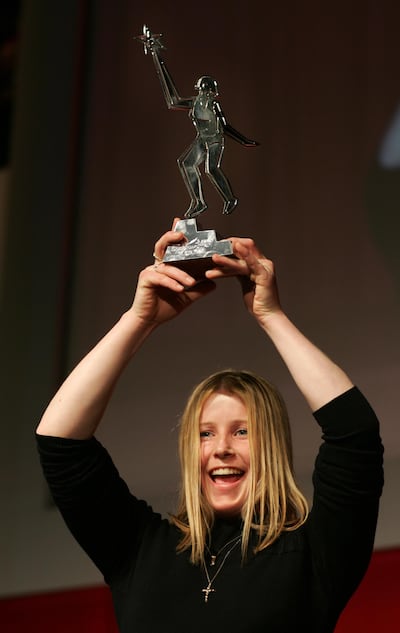
The inaugural Sportswoman of the Year in 2004 was the jockey Cathy Gannon, who took the overall award for being flat racing’s champion apprentice. Thirteen years later, Rachael Blackmore was jump racing’s equivalent and it wasn’t even enough to win her Sportswoman of the Month. She has now won the Grand National and the Gold Cup in successive seasons and the Champion Hurdle in both. If you’d suggested that as a prospect for a female jockey at the 2004 awards lunch, they’d have confiscated your wine.
Claire Coughlan won a monthly award in 2004 after going unbeaten in three matches at the Curtis Cup, the amateur golf team event between the USA and GB & Ireland. Leona Maguire won on the LPGA Tour in 2022 and ends the year having cleared €1.74m in prize money as a professional. Maria McCambridge was the July winner in 2004 for coming first in the 5,000m at the national championships and, by doing so, qualifying for the Olympics. In 2022, Ciara Mageean won silver medals at two major championships to grab the August award.
There were no boxers among the monthly winners in 2004. There are four – four! – in 2022, including two world champions, one European champion and one OG superstar who sold out Madison Square Garden on a night when fight fans the world over let all the old certainties melt away and just enjoyed a good tear-up. Five other Irish boxers won medals at either the Commonwealth Games or the European Championships – or, in Michaela Walsh’s case, both – and none of them got a sniff of a monthly award.
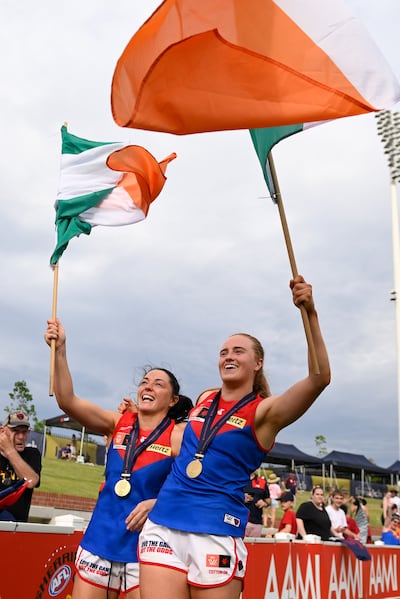
Actually, let’s look at it from that angle instead. What doesn’t win a Sportswoman of the Month award in 2022? Sinéad Goldrick became the first woman ever to add an AFLW winner’s medal to an All-Ireland winner’s medal (or, in her case, four of them). Bláithín Mackin was alongside her, winning the title with Melbourne Demons in her first season in Australia. It’s only four years since Cora Staunton won a monthly award for scoring two goals in her first AFLW game – in 2022, actually winning the competition outright doesn’t get it done.
Eve McCrystal and Katie-George Dunleavy won their sixth world gold medal in paracycling. Two crews won bronze medals at the rowing world championships. Kilkenny won an injury-time All-Ireland camogie final. Shelbourne FC lost half their team across the season and still won the double. None of them, not a single individual from any of those crews, teams or squads was able to catch enough of the judges’ eyes to take a monthly award this year. That just wouldn’t have been the case in the past.
As for what we should extrapolate from all this, there’s a few things worth noting. First and most obviously, we are blessed with this generation of sportswomen. Their success is their own and it’s a bad look for anyone in the outside world to be puffing themselves up and sniffing about for a slice of the credit. That goes for award schemes and media just as surely as it goes for politicians and sporting bodies. These athletes did this. Nobody else.
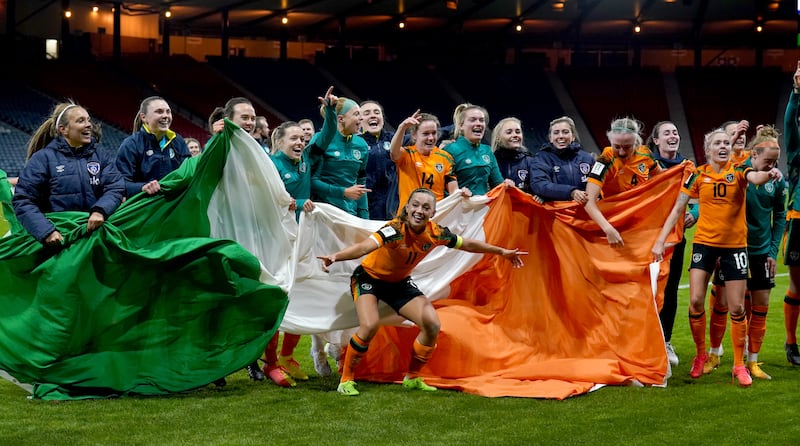
Secondly, there’s no such thing as an achievement that doesn’t matter. Everything feeds everything. Women’s sport is so young compared to men’s sport that it’s only natural that we still see firsts every year. The first ever qualification for a World Cup. The first ever Gold Cup by a female jockey. The first ever LPGA Tour win for an Irish golfer. But everything big started out small.
Nowhere is this more obvious than in boxing. When an 18-year-old Katie Taylor won her first monthly award in May 2005, she did it on the back of becoming the first Irish woman ever to win a European senior gold. She was such a pioneer that she remained boxing’s only presence in the awards for the first 11 years of its running. Then Kellie Harrington came along. Now Amy Broadhurst and Lisa O’Rourke are world champions. Now Ireland are top of the medal table at the European Championships.
Now parents across the land look at women’s boxing and instead of terror or disgust, they see sportspeople who are among the most admired figures in Irish society. In the match programme at the All-Ireland camogie finals in August, a player from all six teams did a Q&A in which one of the questions was to name the sportsperson they would most like to meet. Half of them said Katie Taylor. That’s down one from last year – this time around, one of the Cork players went for Rachael Blackmore.
The reason any of this matters is there for all to see. Week after week, month after month, sport after sport. The patterns and rhythms are clear as day. When an Irish sportswoman succeeds, it tends to filter down. Not always and never in a straight line but enough to show the way.
[ FAI’s newly-created role designed to hasten the development of women’s gameOpens in new window ]
All of which presents, gradually but insistently, a new landscape for the rest of us to get used to. For the sporting bodies charged with putting up the scaffolding that will allow these teams and individuals to keep building, this is a significant point in time and they have to watch how they go. Before now, they could mosey along and throw out a few halfhearted initiatives and few enough would notice. That won’t wash any more.
So when the IRFU makes a big deal of announcing the offering of 37 professional contracts to the Ireland women’s Sevens and 15s players, the general reaction is automatically cool and mistrusting. People drill for detail. Lo and behold, the size of the contracts – generally €15,000 to €30,000 – makes it hard for some players to justify moving to Dublin to honour them. But then again, it’s a start. The best time to plant a tree was 10 years ago. The second best is now.
Times change. The big sports bodies are all out there casting about for ways to change with them. The FAI has come a long distance in a short time but now they have to take on the monumental task of making the league here a worthwhile pursuit for everyone involved. Virtually every player going to the World Cup had to get out of Ireland to give themselves a chance of making the squad. That’s an enormous tanker for the FAI to try turning around – and now they have to do it with everyone watching and questioning and, crucially, caring.
On it goes. The LGFA still hosts the biggest day of the year in women’s sport but it’s losing its best and brightest to Australia in uncomfortable numbers. It’s a full decade since anyone other than Cork, Galway or Kilkenny have appeared in an All-Ireland camogie final. Hovering over both organisations are the ongoing talks about merging with the GAA, a literal identity crisis that nobody pretends will be resolved simply.
The common thread through it all, however, is an enormous sense of opportunity. In one way or another, all the issues are down to the fact that more women and girls than ever before want to be involved in sport, want to take it seriously and want to be taken seriously while doing it. The incredible achievements at the top are the most natural recruiting tool sport in Ireland has ever had.
What an unforgivable waste it will be if we make a mess of it.




